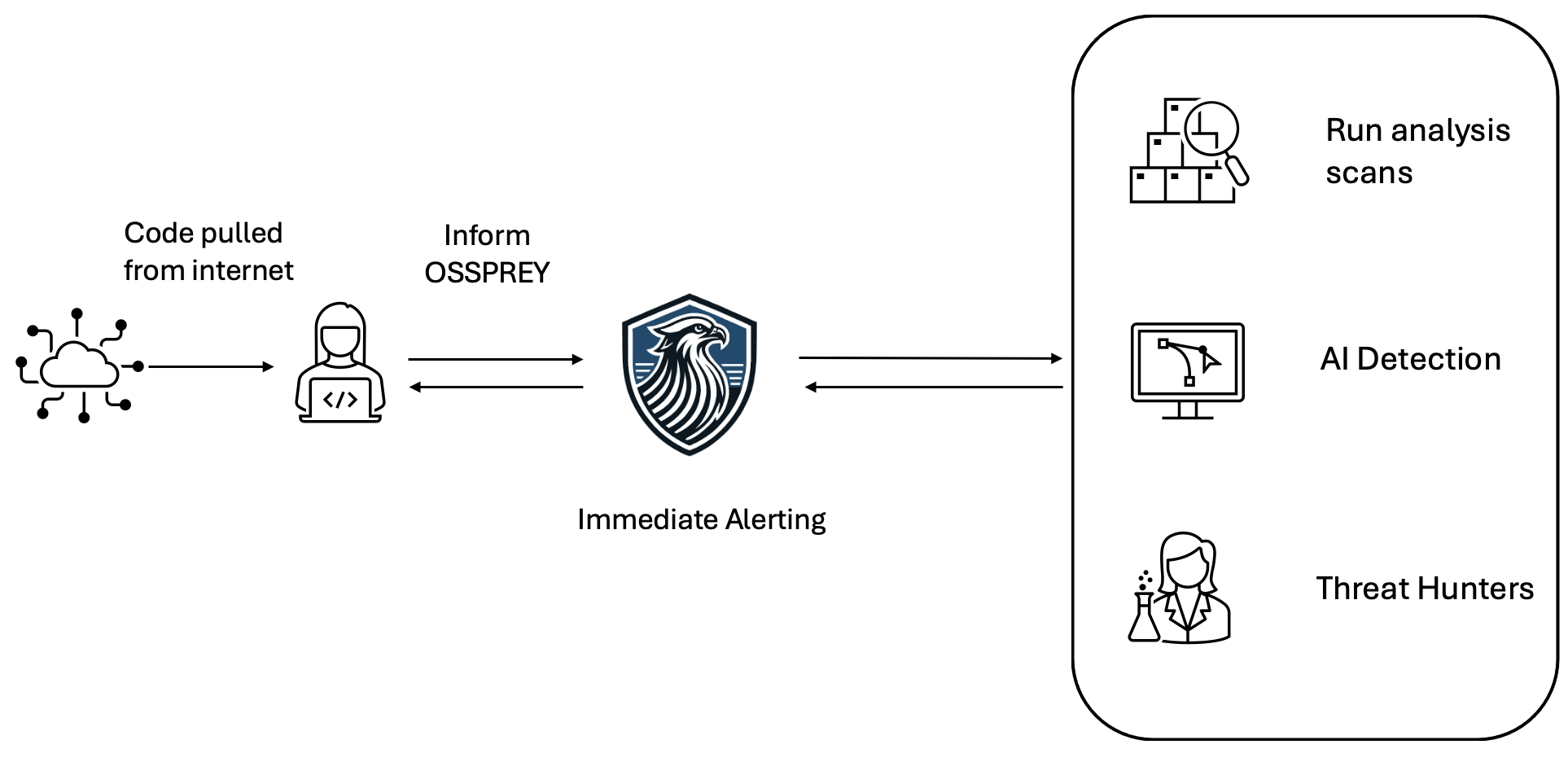Use any Open Source code while staying secure
Build your product how you want without worrying about pesky malware!
Build your product how you want without worrying about pesky malware!
As an engineer, you need to build as quickly and efficiently as possible. When you find an Open Source solution you want to just start using it. However, often your company will require to go through some sort of approval processes become you can use it. This takes time and adds friction when you just want to get the package and get your job done. With OSSPREY, you can validate that the code is safe to use immediately and be able to start working with it straight away.


Integrate OSSPREY into your development environment or software pipelines to have full visibility of your Open Source and stop malware before it can impact you.
Discovering embedded malware after it's been built into production is a messy, hands-on incident. This nightmare could include rolling back versions, rewriting previously functioning code, cascading breakages, and tons of hidden tech debt. Use OSSPREY to stop Open Source Malware before it can impact you.

One company cared deeply about making sure that the code they built and ran was trusted. In order to do this they made sure that any Open Source libraries or Github repositories they used had been vetted by their security team before they could be used. However, engineers would find easy ways to solve problems with Open Source but be blocked on approval. This process was time consuming and often led to delays, sometimes hours sometimes days.
These delays led to frustration and, worse, risky workarounds. Engineers started adopting anti-patterns such as:


As a result, the company faced several issues:
This was the worst of both worlds; slower development with no real security guarantees.
With OSSPREY, these issues were completely resolved. The company's engineers were able to:
We are currently in closed beta and would love to have you on board. Please fill out the form below and we will get back to you as soon as possible.